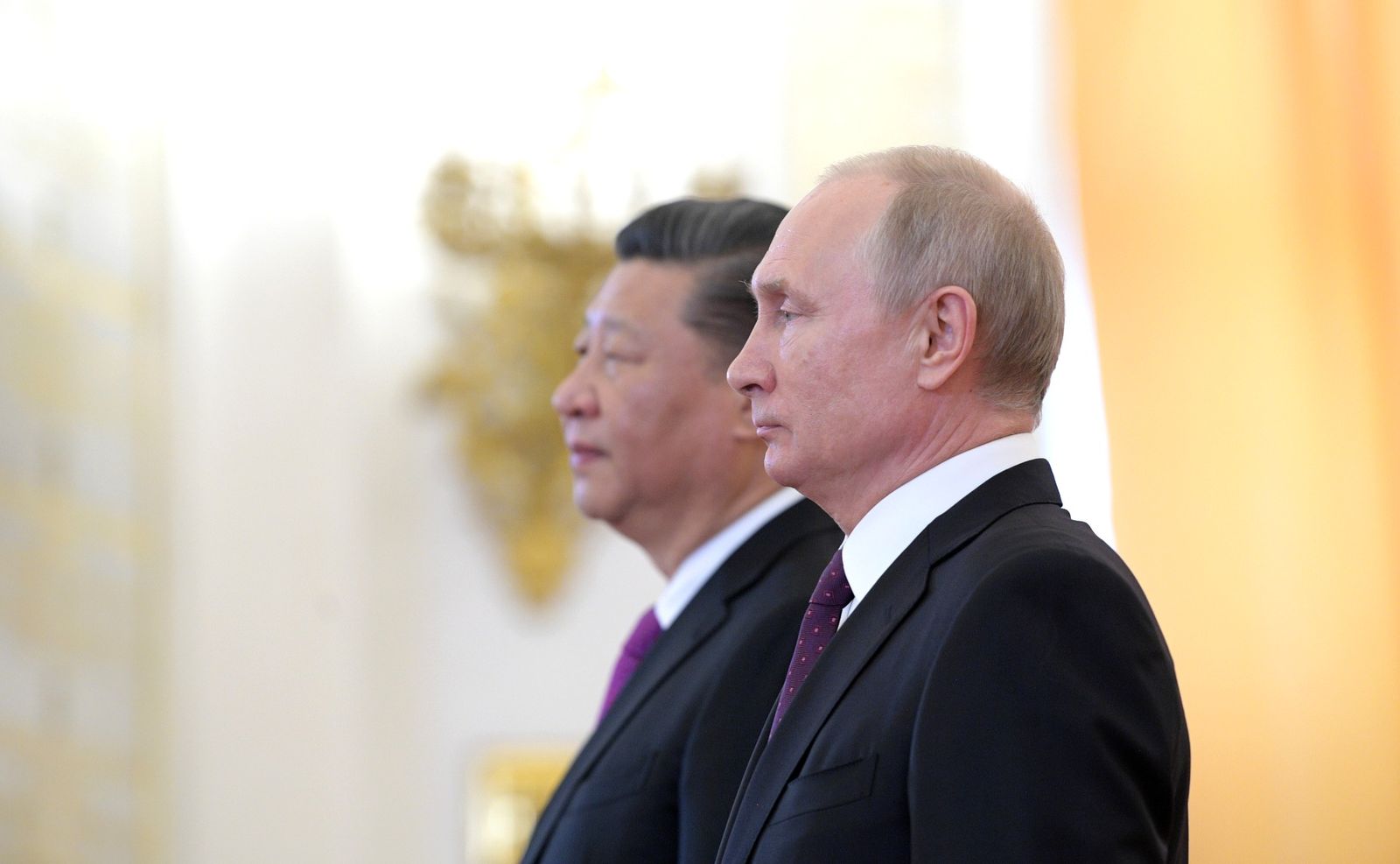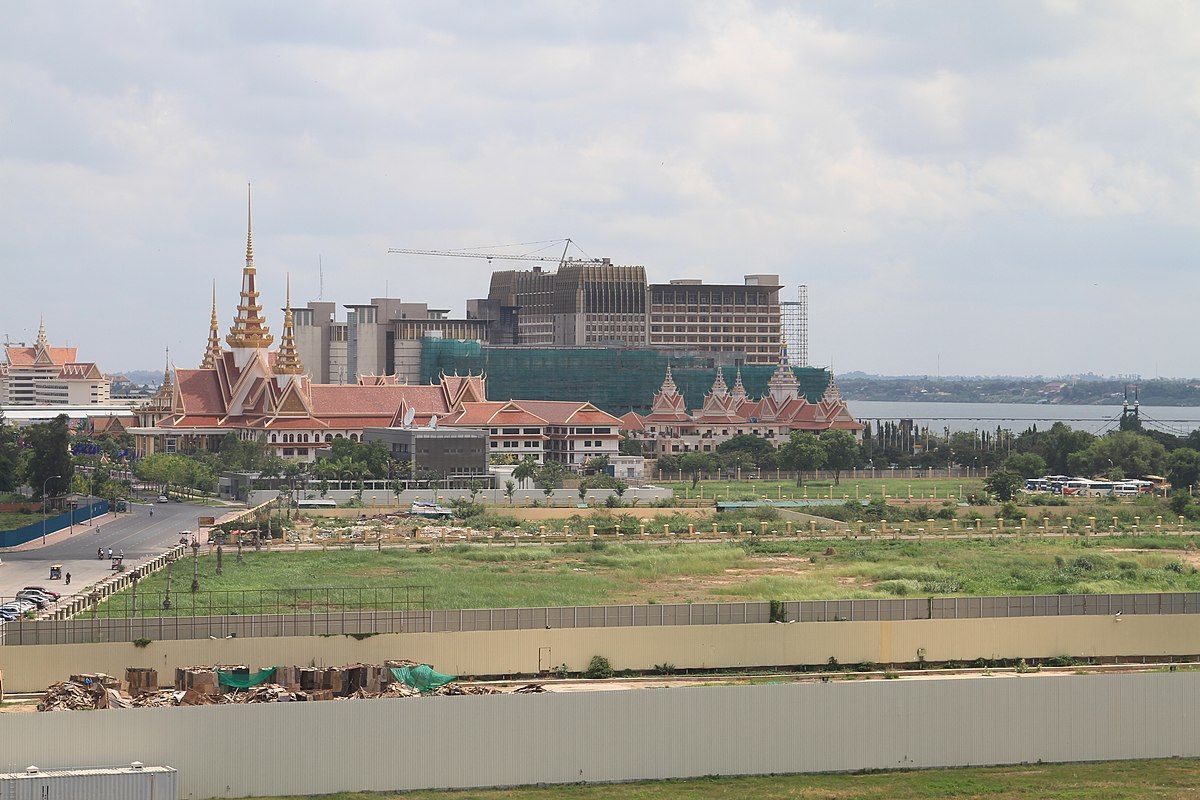At the World Economic Forum’s Davos Agenda meeting in January 2021, China’s President Xi Jinping arrived with a bold message: “let the torch of multilateralism light up humanity's way forward.” At first glance, Xi’s message seems like a common and benign signal of a state’s willingness to cooperate at the international level. In light of China’s crystalizing and expansive grand strategy, however, it becomes clear that Xi’s eyes are set on the transformation of the present international integration system. In his speech, Xi asserted that China will lead global efforts to promote “peaceful coexistence, mutual benefit and win-win cooperation,” and that “the world will not go back to what it was in the past.” In essence, Xi imagines an alternative egalitarian future contrary to what he sees as today’s hegemonic Western power—Xi is proposing a novel, multilateral approach to global issues. Is Xi’s speech lofty rhetoric, or is it backed by the capacity to achieve his ends? China’s Belt and Road Initiative (BRI) may give Xi the weight that his words beg for. What does this mean for the future of the present international integration system?
In September 2013, Xi introduced a groundbreaking project to the world stage: a new Silk Road to connect the world through modernized trade routes and cooperative technology. This grand strategic plan, called the Belt and Road Initiative (BRI), acts simultaneously as an international forum for development and interconnection and as an instrument for Chinese power and influence.
To what extent the BRI will act as genuine international cooperation in the spirit of the now-extinct Silk Road, and to what extent it will act as aggressive and unilateral Chinese power projection, is yet to be answered. To answer this question, we must trace back the geopolitical climate which led China to act as an international development and trade power. We must also consider how the United Nations (along with the present Western-led international integration institutions such as the World Bank, International Monetary Fund (IMF), and the Asian Development Bank (ADB)) might have agency in the BRI’s efforts at global integration.
The New Silk Road: the Belt and Road Initiative
Harkening back to the nearly 2,000 year period of history-defining Eurasian economic, cultural, and political exchange, China hopes to break a multi-century pause in the Silk Road. The Silk Road fostered communication and exchange between Asian and European civilizations centered on the extremities of the Eurasian supercontinent, defining the historical trajectory of all trading partners involved. In the opening ceremony of the Belt and Road Forum for International Cooperation, Xi compared himself to the Western Han Dynasty’s imperial envoy Zhang Qian, who had traveled to Central Asia 2,100 years ago to initiate the first transcontinental linking of Asia and Europe by way of friendly contacts in Central Asia.
Xi’s vision of a China-led global integration initiative is similar to the Silk Road in its scope, genesis, and functionality. Like the Silk Road, the BRI includes a nearly hegemonic amount of the global population and global trade. This ambitious, transcontinental trade and infrastructure project involves more than 139 countries, 63 percent of the world’s population, and 40 percent of global GDP. Like the original Silk Road, the BRI promises to build efficient land routes between East Asia and Europe (the belt), and sea routes between East Asia, Southeast Asia, and Africa (the road). While the Silk Road’s ancient Eurasian land routes were largely replaced due to the dominance of modernized naval trade, the BRI aims to revitalize the importance of Eurasian land trade for the global economic system, as well as increase the efficiency of Afro-Eurasian sea routes. A 2019 World Bank study indicates that the BRI’s land and sea routes have the potential to benefit all countries with planned infrastructure sites as well as the global economic integration system, if transport costs can be reduced through improved infrastructure.
Setting the Scene: the Geopolitical Climate Leading up to BRI
To understand the significance of the BRI in today’s geopolitical climate, it is imperative to understand what led China to initiate a project involving more than half of the world’s population.
China, with notably rapid economic growth in the early twenty-first century, is seeing a gradual slowdown in domestic growth, with much of its growth derived from rapid industrialization. Nonetheless, China seeks to maintain its status of exponential growth to compete on the world stage as a global superpower. Thus, China is looking outside its borders, seeking to export its model of exponential growth to neighboring states. Such a grand prospect necessitates a grand project, encapsulated in the bold vision of the BRI as a transcontinental rejuvenation of the ancient Silk Road.
In addition to China’s domestic development concerns, Xi’s BRI announcement entered the world stage at an opportune moment to flex Chinese power and influence. China’s grand project takes advantage of a crack in global confidence in the previously unshaken American global hegemony. While China has exploded onto the world stage with a comprehensive plan for global integration, the United States has cut back on federal research and development funding and withdrawn from multilateral forums such as the Trans-Pacific Partnership. With increased domestic political pressure for the United States to cut back on overseas spending and international adventurism, partially as a result of the so-called “Iraq syndrome” of Americans who are tired of overseas quagmires, isolationism is growing in America’s political climate. China is taking advantage of the void left by the declining state of American activism and hegemonic power to assert itself on the world stage with ambitious prospects for global integration.
Western-Led International Systemic Response to the BRI
The ancient Silk Road was invented unilaterally by the Chinese Han dynasty in the second century BCE in order to connect China with lucrative empires in the Middle East and Europe. In the absence of international institutions, the Han Dynasty took the initiative to construct multinational trade routes and achieve history-defining international cooperation. Theoretically, today, rather than the imperial envoys of ancient empires, we have international institutions whose foundational role is to promote global cooperation and integration like that seen in the ancient Silk Road. The fact that a sovereign state is embarking on projects of global integration suggests a lack of substantive agency accorded to today’s dominant integration institutions on modern globalized projects.
Since the announcement of the BRI, the United Nations has maintained a positive outlook on the future of the BRI and undertaken efforts to ensure that BRI projects accord with visions of sustainable development. The UN welcomes the BRI’s positive influence on global politics, stating that its mission of win-win cooperation, common development and prosperity, and peace and cooperation “conforms to the values of the 2030 Agenda.” However, the UN attempts to bring the BRI under its normative commitments to sustainability in global initiatives. In 2019, the UN created the Belt and Road Initiative International Green Development Coalition (BRIGC) specifically to oversee BRI projects in order to ensure compliance with UN sustainability standards. The BRIGC involves 134 partners, which include 26 Environmental Ministries of UN Member States.
In its supervision of the BRI, the UN seeks to mitigate what it sees as the worst effects of the Chinese project, rather than taking agency to facilitate the global cooperation that is intrinsic to global integrative projects such as the BRI. In the scheme of the BRI and related global integration initiatives, rather than acting as a sovereign agent, the UN behaves as a stage for great power politics, ready to reflect a Chinese rise in influence in the UN’s own institutional design.
With regard to the present Western-led global trade and integration system, China’s emergent challenge is epitomized by the Asian Development Bank (ADB)’s conflict with the novel Asian Infrastructure Investment Bank (AIIB). The ADB, spearheaded in 1966 by the United States, Japan, and West-friendly powers, meets a new challenger in the behemoth of the AIIB, a Chinese-led initiative founded in 2016 to coincide with massive BRI-related projects, which now includes over 103 member states. The ADB’s emergent challenger parallels similar qualms faced by like-minded institutions such as the World Bank and IMF. In the context of BRI, while the UN acts as an arena for great power politics, the World Bank, IMF, and ADB act as agents of power, losing their hegemonic supervision of global trade to the first legitimate challenger in their history.
Rather than the pessimistic zero-sum outlook of Chinese institutions versus Western-led institutions, collaboration between the two spheres is promising in some domains and could define the future of multilateral cooperation. In this domain, the UN as an international forum may prove to be incredibly valuable. For example, the United Nations Development Programme (UNDP), along with the China Development Bank, recently launched a joint report aiming to harmonize investment and financing standards towards the ultimate goal of sustainable development worldwide.
Debt Trap Diplomacy
A major critique brought forth about the BRI, primarily by American officials, are accusations of “debt trap diplomacy.” Chinese international loans now exceed five percent of global GDP, and such loans often bear provisions of Chinese seizure of completed infrastructure if the recipient country is unable to make loan payments. Such provisions could potentially lead to Chinese influence and sway over the internal affairs of participatory countries, many of which are small and low- income, with few means to challenge Chinese dominance through aggressive loans. For example, in 2017, China provided loans to Sri Lanka to build the port of Hambantota, and when the government of Sri Lanka predictably defaulted, China demanded control over the port as collateral.
While this Sri Lankan port case gained plenty of media attention, with over 2 million hits on Google, the Johns Hopkins’ China-Africa Research Initiative (SAIS-CARI) concluded that, of thousands of BRI projects, this specific example was the only case that could adequately be called “debt-trap diplomacy.” Further, the Chatham House think tank determined that an IMF bailout is likely to blame for this specific Sri Lankan case, and, in general, the majority of predatory loans today derive from developed countries, rather than the emergent and ubiquitous Chinese loan process. According to these findings, Chinese loan initiatives are likely to be equally fair as the present Western-led loan systems, and there is insufficient evidence to plead doomsday for the international loan system on the basis of ubiquitous Chinese loans.
The United States' Staunch Opposition to the BRI
With the majority of the world on board with the BRI and largely optimistic for its success as a global integration initiative, the United States maintains staunch opposition to the BRI, refusing to back down in great power competition with China.
The United States’ staunch opposition to the BRI is notable, considering that many of the United States’ closest allies are participatory members of BRI projects. As the major objective of BRI land routes is to connect the extremities of the Eurasian continents, European partners are essential partners to the success of the BRI. Germany, for example, is the largest non-regional investor of the BRI-affiliated AIIB, and serves as a European hub for freight shipments running from China to Europe. China has also lent over US$6.7 billion to Balkan states including Bosnia and Herzegovina, Montenegro, North Macedonia, and Serbia for BRI-related infrastructure projects.
Israel, one of the United States’ closest allies, is remarkably participatory in the BRI, considering its close ties with China’s American superpower rival. Upon hearing of the BRI’s ambitions, Israeli Economy Minister Naftali Bennett proclaimed Israeli cooperation with China to be a “top strategic goal” and pledged that “hundreds of Israeli companies will operate in the Chinese market as soon as possible.” China, in turn, sees great value in Israeli technological expertise for fulfilling its ambitious projects. Since the launch of BRI, Chinese companies have completed over US$5 billion in acquisitions from Israeli technological companies.
The United States, however, remains hostile and confrontational towards the BRI, with President Biden proposing an entire alternative project called “Build Back Better World” in June 2021. While this project poses a seeming challenge to the BRI, it is unlikely for the United States to have the desire, nor the domestic political means, to pursue a project as comprehensive and explosive as the BRI. In comparison to China’s unitary domestic and foreign policy constitutional design, the United States’ foreign policy-making is divided between executive and legislative powers, full of bureaucratic factionalism, and prone to selective engagement rather than wide-reaching activist initiatives. Contrary to most global powers throughout world history who matured under competitive great power politics with their neighbors, and thus developed a propensity to seek active and comprehensive foreign policies out of existential threat, the United States has developed for its entire history as the only great power in its neighborhood. The United States, therefore, as an essential characteristic of its foreign policy, tends towards global engagement when it’s worth it, instead of as a continuous imperative for security and wealth. Due to institutional design, it is remarkably unlikely for the United States to be able to rival the level of activism and engagement that China brings to the table with the BRI.
The BRI's Future Implications for the United States and the World
With regard to the United States’ status in the rise of the Chinese BRI, it is impossible to categorically assign a negative normative judgement for the US. While the United States and its allies may lose hegemonic control over international integration, this process is unlikely to have direct implications on US security or prosperity. While President Biden sees Chinese leadership in trade integration as hostile to the United States’ fundamental interests, asserting in March 2021 that China wants “to become the leading country in the world...that’s not going to happen on my watch,” it is unclear whether the BRI can compromise the United States’ key interests. Biden’s alternative plan to build an entire substitute for the BRI—“Build Back Better”—aims to expend American resources to counter the behemoth of the BRI. Instead, the United States may refocus executive priorities on security, national defense, prosperity of US industry, and effective democratic institutions at home. In a world with many models for national success, the Chinese model of exporting domestic growth to exterior integration institutions is not the same path that the United States must follow to effectively outcompete China.
With global integration as an arena for great power politics, China is flexing its muscles at a level that the United States simply is unwilling or unable to pursue. China’s BRI reveals not only the relative lack of commitment from the United States to global integration, but also exposes the UN as an arena for great power politics, rather than a sovereign globally integrative agent. With regard to global trade supervising institutions, the slipping of hegemonic control by the World Bank, ADB, and IMF suggests that the bold and emergent Chinese challenge may finally bear sufficient economic and political power to shake the previously-stable and Western-led global trade regime. While China may have the potential to counter today’s previously unshaken integration institutions, this fact is insufficient to plead doomsday for US power or global trade.





